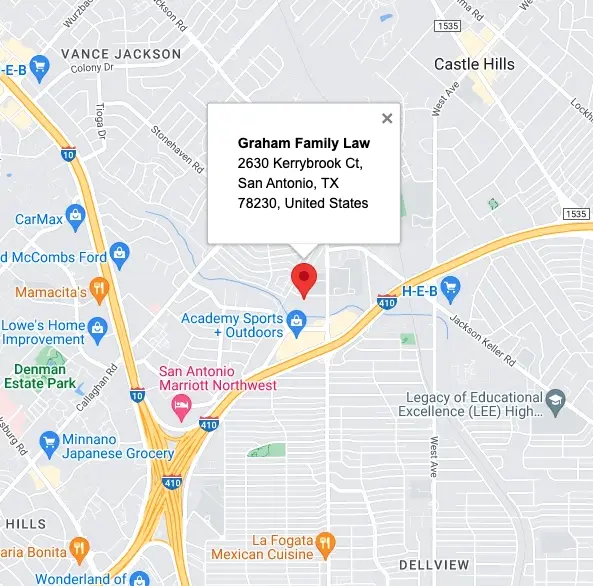Understanding the Texas Divorce Process: A Practical Guide
Wondering about the Texas divorce process? Going through a divorce is never easy. Between legal procedures, emotional choices, and major life adjustments, the experience can feel overwhelming. If you’re researching how to file for divorce in Texas or need to understand the divorce steps in Texas, this guide is here to help. We’ll break down how divorce works in Texas, from crucial eligibility requirements at the start to the final steps that make your divorce official.
In this article, you’ll find a clear overview of how to file for divorce in Texas, each phase of the process, and what to expect whether you settle outside the courtroom or need a judge’s decision.
First Things First: Getting Ready for Divorce Process in Texas
Before filing, there are certain rules you need to check off your list. Taking some time to get familiar with Texas requirements will help your case go smoothly.
Divorce Process: Texas Divorce Residency Requirements
If you’re wondering about eligibility for divorce in Texas, the state has specific residency rules you must follow. To meet the Texas divorce residency requirements:
- Either you or your spouse must have lived in Texas for at least six months.
- One of you must have resided in the county where you plan to file for at least 90 days.
You can file for divorce in Texas and submit your paperwork in the appropriate county once you meet the Texas divorce residency requirements, no matter where you got married.
Reference: Texas Family Code, Sec. 6.301.
Divorce Process: Legal Reasons for Divorce in Texas
In the Lone Star State, most divorces proceed on “no-fault” grounds. That means neither person needs to prove wrongdoing. The usual reason cited is “insupportability,” which just means the relationship has broken down so completely that fixing it isn’t realistic.
Still, Texas law also provides for “fault” divorces, which might cite issues like cruelty, infidelity, or certain felony convictions. Opting for a fault-based divorce could impact how property is split, but tends to involve more disputes and complexity.
Divorce Process: Property and Asset Division
When dividing assets in a Texas divorce, the court relies on community property laws in Texas. Under these rules, nearly everything earned or bought during the marriage—income, investments, houses, vehicles, and retirement accounts—is treated as community property and subject to division. In contrast, property owned before the marriage or received as a personal gift or inheritance typically counts as separate property and stays with the original owner.
Dividing assets in Texas divorce cases isn’t always a simple 50/50 split. Instead, Texas courts focus on what’s “just and right,” taking into account things like each spouse’s health, earning capacity, and even conduct during the marriage. These factors help judges decide on a fair outcome based on community property laws in Texas.
Seven Main Phases of a Texas Divorce Process
After handling the initial requirements, the official divorce process follows several defined steps.
1. Submitting the Divorce Petition
To begin the divorce process, one spouse—legally called the “petitioner”—must file a divorce petition in Texas. This involves preparing and submitting the Original Petition for Divorce and all required Texas divorce paperwork to the local county court. The petition details basic information about the marriage, any children involved, and the specific reasons for seeking divorce. You can also include requests related to the division of property, financial support, or custody arrangements when you file a divorce petition in Texas.
2. Notifying the Other Spouse
Next, the petitioner must let the other spouse—the “respondent”—know about the filing. A sheriff, constable, or licensed process server delivers the necessary documents in person. Alternatively, if you and your spouse are cooperating, the respondent can sign a Waiver of Service, which formally acknowledges receipt and speeds up the process for uncontested divorces.
3. Response from the Respondent
Once served, the respondent has a limited amount of time to submit an official Answer with the court, signaling their participation. If this answer isn’t filed by the deadline, the petitioner can sometimes move forward and request a default judgment—essentially obtaining the divorce on their terms.
4. Issuing Temporary Orders
There’s a mandatory two-month (60-day) waiting period for divorces in Texas, and contested divorces can last much longer. During this interim, either party may ask for temporary court orders. These instructions can cover:
- Where children will live and whom they’ll stay with,
- Child and spousal support arrangements,
- Who resides in the family home,
- Payment of bills,
- Temporary handling of marital assets.
These orders help maintain stability until the divorce is completed.
5. Information Exchange (Discovery)
Both sides need access to accurate information about finances, property, and debts. This exchange—called discovery—may involve sharing bank records, pay stubs, tax documents, and real estate valuations. Both parties must answer written questions under oath and might need to take part in oral depositions.
Transparency is vital, and hiding or failing to disclose assets can result in court penalties.
6. Deciding the Outcome: Negotiation, Texas Divorce Mediation, or Trial
The resolution of your case depends on how well both parties can agree on the major issues, which determines whether you will experience an uncontested divorce process or face a contested divorce in Texas.
Uncontested Divorce Process in Texas
When couples come to an agreement on all important aspects—such as the division of assets, child support, and custody—they have the option to pursue an uncontested divorce process. This often involves drafting a settlement agreement or an Agreed Final Decree of Divorce. Additionally, many people in Texas choose to utilize Texas divorce mediation, where a neutral third party facilitates discussions to help all parties reach mutually acceptable solutions. Furthermore, mediation tends to be less expensive, significantly faster, and considerably less stressful compared to going to court. Consequently, it has become a favored approach for those seeking an uncontested divorce process in Texas.
Contested Divorce Process in Texas
If you and your spouse cannot resolve differences through negotiation or Texas divorce mediation, you may need to proceed with a contested divorce. In this case, unresolved issues are decided in court, where both sides present evidence and arguments before a judge makes a final ruling. Since contested divorces typically take more time, are costlier, and cause greater emotional strain, many couples opt for mediation or settlement first to resolve disputes more amicably and efficiently.
7. Final Orders and Divorce Decree
Wrapping up the process, the judge signs the Final Decree of Divorce. This document spells out the division of property and debts, determines custody, and outlines any support obligations. Once the decree is official (and after the required 60-day waiting period), your marital status change is finalized.
Should You Hire a Texas Divorce Attorney?
Many people wonder, “Do I need a lawyer for divorce in Texas?” While Texas law doesn’t require you to hire a divorce lawyer, seeking legal help for divorce in Texas is almost always the best strategy—especially if you and your spouse don’t agree on key issues or have significant assets to divide. An experienced Texas Divorce Attorney will protect your interests, explain your rights, and help you navigate the state’s specific divorce laws. A knowledgeable professional will help you avoid costly mistakes, handle all paperwork and negotiations properly, and allow you to focus on rebuilding your life.
Divorce inevitably brings challenges, but by understanding the process and getting the right legal help for divorce in Texas, you can make the journey far more manageable. Careful preparation and the right legal help make all the difference as you start the next chapter.
How Graham Family Law Can Help You with the Divorce Process
The team at Graham Family Law is committed to safeguarding clients’ rights and achieving fair outcomes. With skilled negotiation, aggressive advocacy, and compassionate guidance, Graham Family Law helps you navigate the complexities of your child custody case. To schedule a meeting with our experienced lawyers, call 210-308-6448.
Related reading:



